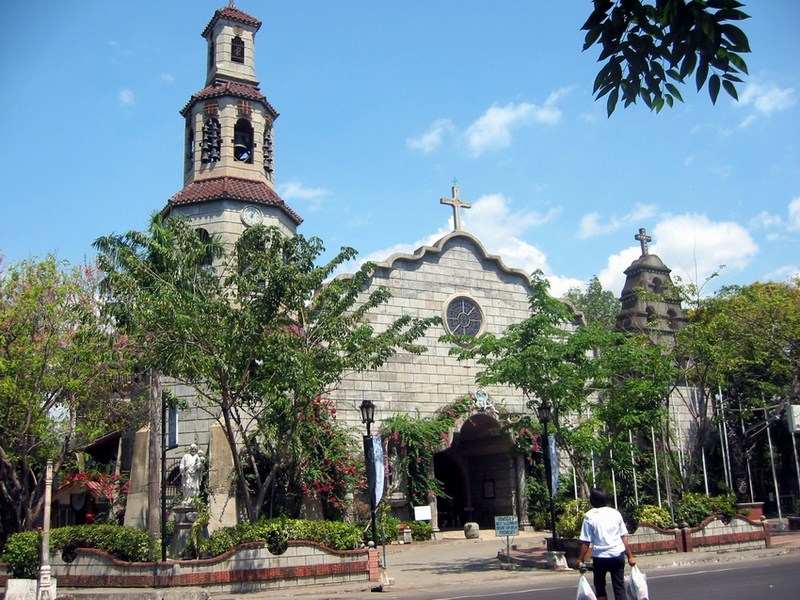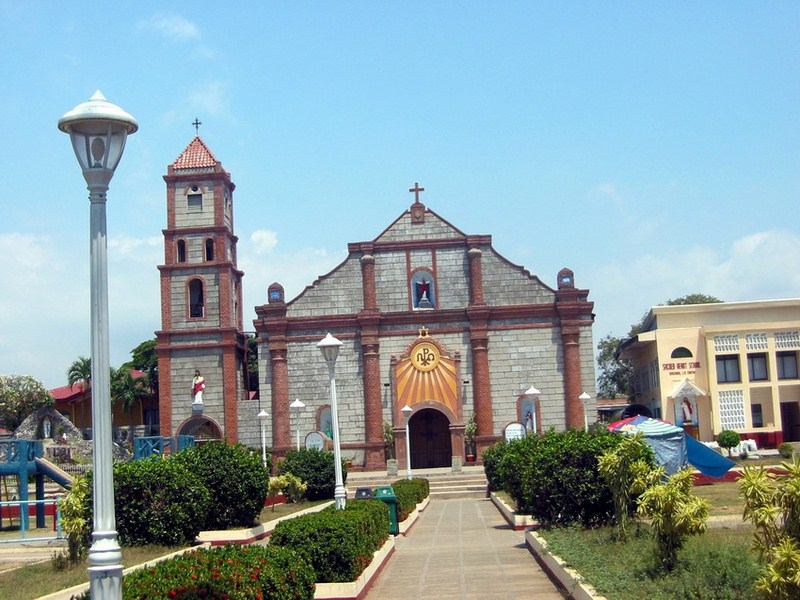Finally, at the northern edge of the city , I drove my Toyota Revo up a promontory overlooking San Fernando Bay, to the impressive Ma-Cho Temple, said to be the largest Taoist temple outside of China. Meaning “Heavenly Mother,” this ornate temple is a mélange of both Taoist and Catholic symbolism and decor and has 5 gates. It was constructed in honor of Ma-cho, a Chinese deity of the Sung Dynasty.
Ma-cho was born in 960 AD at Meizhou village in the scenic island of Moichow in the province of Fukien in southeastern China. According to legend, she did not cry during the first month of her infancy. Thus, she was first named Mo meaning “keeping silent.” Intelligent, she became a monk at the age of 10 and was said to be gifted with healing powers and the ability to predict the weather and sea conditions, even days ahead. During typhoons, she actively participated in rescue operations for fishermen. Locals called her the “Dragon Girl,” “Goddess of the Sea” or “Queen of Heaven.” She died young, at age 27, but even today, local sailors and fishermen believed that her spirit, dressed in red, continues to watch over and protected them.
Here in the country, Ma-cho is known as the Virgin of Caysasay, patroness of the Filipino-Chinese faithful. The temple houses a replica of the image, a parting gift of love given by Taiwanese fishermen in 1968. The distinctive features of the temple were inspirations of Ma-cho through buyong sessions held every other week. Here, temple elders read or interpret Ma Cho’s message to the faithful.
| Ma-Cho Temple |
The temple, designed by Arch. Tomas Diokno, sits on a 9,000-sq. m. lot at an elevation of 70 ft.. Groundbreaking began on September 11, 1975 and actual construction began on December 2, 1976. The Virgin’s image was enshrined on July 3, 1978 and the temple was finally inaugurated on December 6 that same year. Devotees believe that Ma Cho and the Virgin of Caysasay are one and the same. From September 21 to 26, devotees gather for the annual celebration of the image’s enshrinement. From the Basilica of St. Martin of Tours in Taal, Batangas, the devotees, together with the image of Ma Cho, will travel back to San Fernando City. Once in the city, it is borne in a procession around the city’s business district, accompanied by the traditional Dragon Dance. It is then culminated by a cultural presentation.
| The temple’s meditation room |
The temple’s entrance wall is adorned with beautifully-carved, imported stone statues of the “Chinese 18 Saints,” in different poses. Its circular courtyard, made with brick, has a centrally-located pond with water lilies and goldfish. Beside it is a small structure where one can burn offerings for the gods. On the other side are statues of animals, believed by the Chinese to be good luck charms. The temple’s towering arch has a panoramic view of the South China Sea. The meditation room has a grand staircase and red kneelers. Ma Cho’s 8″ high wooden image is adorned with a traditional Chinese headdress and richly-colored robe. Her oriental eyes are closed while her hands are clasped together at her chest. Aside from incense, devotees also offer food and money at the shrine. Also housed in the sacred temple is Tho Ti Kong (God on Earth) while in another garden stands the statue of Kuan Yi Ma (God of Mercy), another important Chinese deity.
Ma-Cho Temple: Ma-Cho Temple Driveway, Brgy. II, City of San Fernando, La Union.








